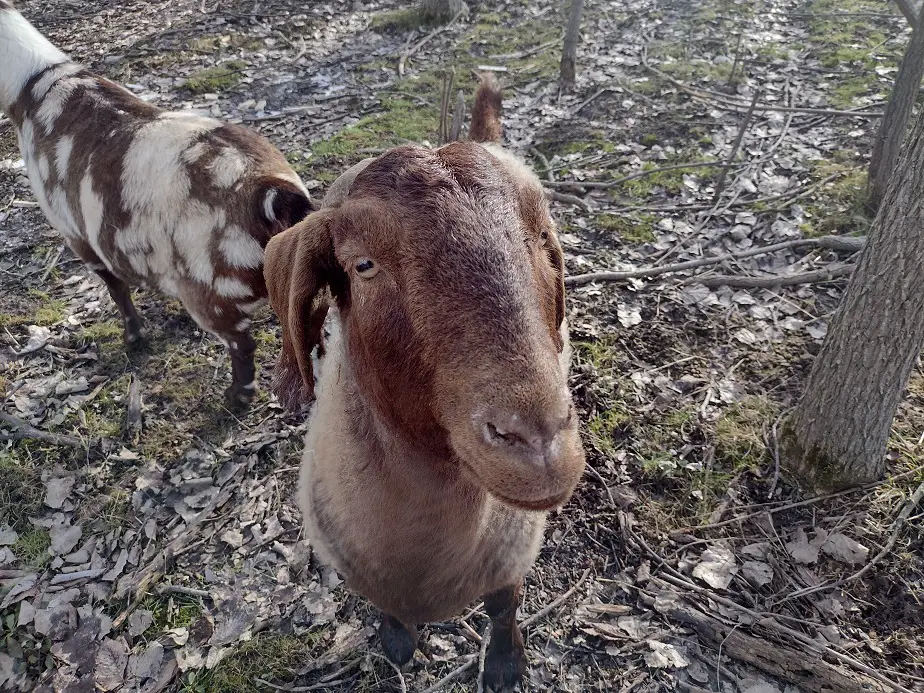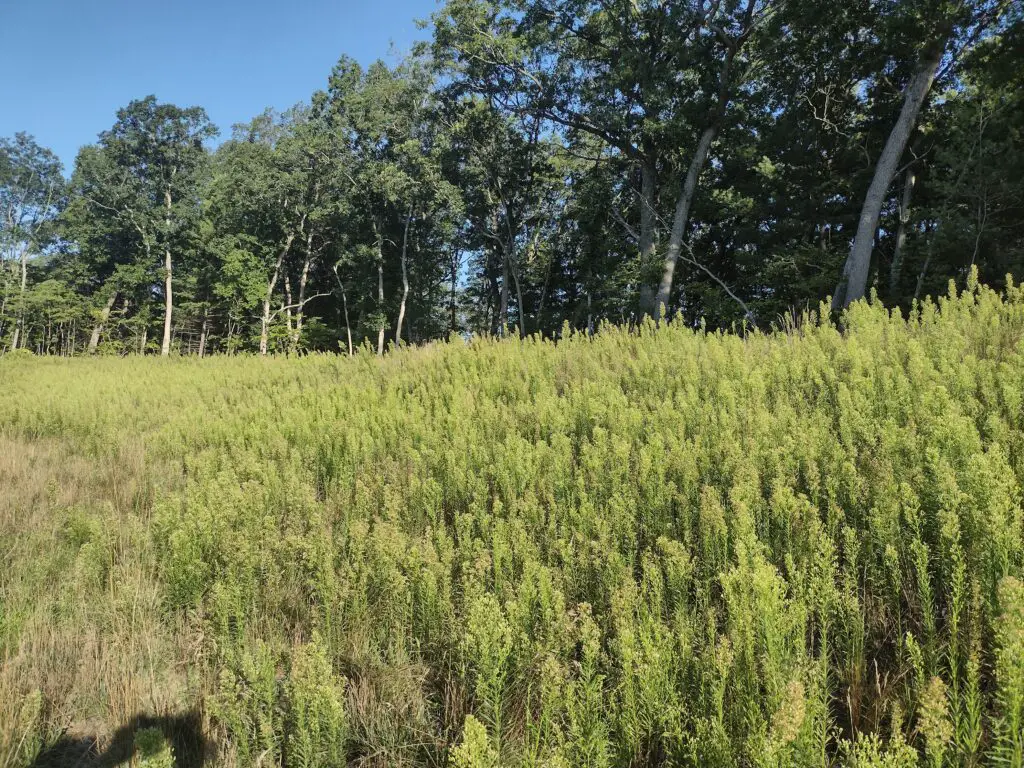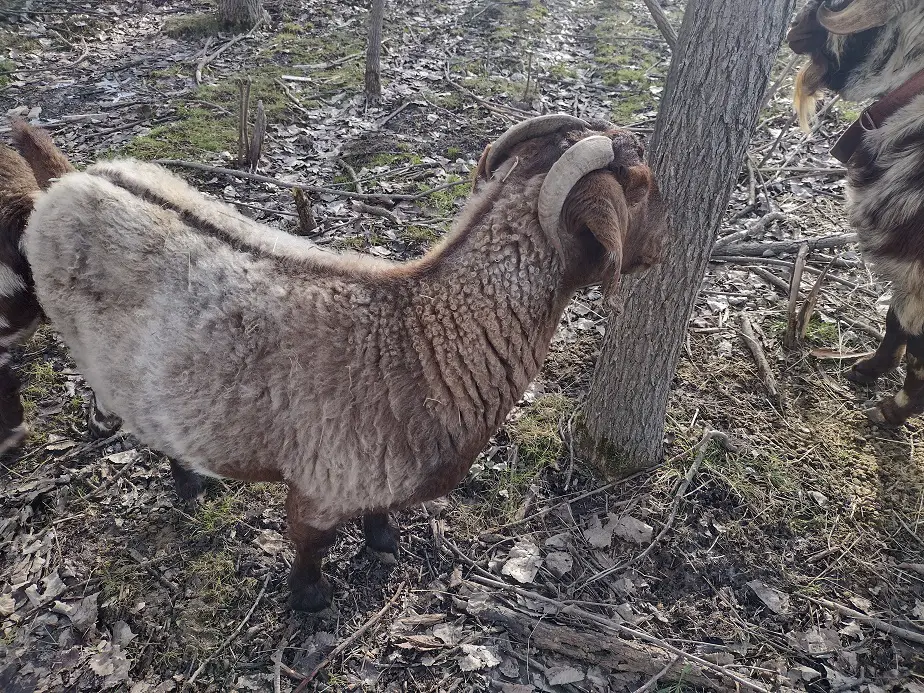Goats are a pretty neat animal to delve into, and honestly, more practical than most people realize.
Goats can be raised on a grass-only diet such as a lawn or wild pasture. Muscular meat breeds will grow better when fed additional grains and protein. Pregnant or lactating does also benefit from a more concentrated ration. A wild grass pasture is better than a single grass species lawn.
So now, let’s get into the nutrition and feed habits that determine how goats graze and stay healthy.

Grass is Good Enough for Goats
Fresh grass is a pretty good fodder for most goats in most situations. It’s often a bit low in protein, but high in vitamins, minerals, and rumen digestibility. A fresh grass diet makes for happy, active goats. Fresh, live grass greatly improves A goat’s digestion, health, and activity level compared to just dry hay.
Grass has everything goats need. It’s got starches and sugars in small amounts, plenty of fiber to break down in the rumen for proper digestion, and all the amino acids that a goat needs to take in. As well as enzymes and chlorophyll compounds that only exist in fresh green plants. Grass is great for goats.
The issue with grass is that some grass is lower in protein, which is the concentration of amino acids. Grass tends to range from 10 to 16 percent protein. poor grass can be as low as 7 or 8 percent and good grass can be up to 23 percent. The difference is mainly region, season, and soil.
Here in the north, a decent grass pasture (like my front yard used to be before I turned it into a garden) runs a minimum 13 percent and regularly fluctuates up to 18 percent during the flowering stage. Let’s call that an average 15-ish percent protein. Now that’s darn good.
The issue is that warm-climate or hot-climate grasses are all lower in protein. Cool-season grasses, which are the only type that can survive in Michigan, are all higher in protein, they are more tender and less stemmy or woody. That certainly comes into play. Cooler climates do tend to grow better wild fodder.
Seasonality comes into play as well. Grass is usually the highest protein when in the later part of the growth stage. Once the seed heads are fully formed, a lot of the protein starts to convert into starch and fiber. When grass is in the early leaf stage, before the stalks have formed, the protein hasn’t filled out yet.
Both of those stages may be a time when you consider supplementing the animal’s diet with an extra protein source. Personally, I tend not to lean that way too much but sometimes it’s definitely a smart idea. Fresh grass will be higher in protein, vitamins, and energy than older dry grass.
Younger grass has more sugars in it and is more digestible because it doesn’t have as much fiber or long-chain starches. Mature grass has more fiber and takes longer to digest. Goats can handle both well enough.
I would hesitate to put goats on a lawn-type environment where the grass is always in the short, youngest stage of growth without supplementing their diet. That’s just not going to let them get the full nutrients available from the more mature plants. If I did that, I’d probably supplement with an all-stock feed.
Goats are tough and adaptable, so it may be fine. I would probably try and give them some hay or other vegetative fodder like sugarbeet, mangel, or sunchoke just to help balance things out.

The Best Pasture for Goats
The best pasture for goats includes high-protein fodder such as chickory, clover, comfrey, and alfalfa. That will improve meat or milk production over grass alone. It can also increase the number of kids born per litter. Grass is fine for maintenance of non-breeding and non-milking goats, but lacking for productive goats.
Clover is a great fodder for goats. It’s on the higher protein side, and it’s higher in vitamins and minerals than most grass. It’s not the most productive or thick-growing crop, but you can grow a fairly thick stand of it in good soil. Clover is hardy and works with very little fertilizer.
Alfalfa is considered the king of fodder crops for goats. It’s highly productive in good soil, higher in protein than clovers, and it’s very high in calcium. Alfalfa is quite useful in a milking operation because the extra calcium really increases milk production. Alfalfa is more of a northern crop.
Chickory is my favorite. It’s an accumulator of trace elements that are often lacking, like selenium. Chickory is quite high in protein and digestible fibers. It also grows very well in subpar soils. Chickory handles drought well and grows back fast. I had a field of chickory before I made it a garden.
Comfrey is a quality fodder crop for goats, but oft forgotten. It’s very hardy, very reliable, very high protein, and tends to overcrowd other plants. Comfrey is known as a takeover crop, and that’s fine by me. It’s also an accumulator of the hard to get minerals. Comfrey can be used to treat mineral deficiencies.
Those are the perennial plants I would consider planting if I was to create a new pasture for goats. I consider all of them to be among the best choices for a goat pasture. Even just planting a section of pasture with them so as to supplement their diet would show improvement in feed efficiency and production.

Managing goat pasture
Manage your pasture by fertilizing and irrigating if needed, re-seeding when thinning occurs, and practicing rotational grazing. Overgrazing does great damage and should be avoided. By splitting the pasture into multiple paddocks, you can rotate the grazing to allow plants a re-growth time.
The two issues I see in a pasture with animals are poor feed quality and poor soil quality. Poor feed quality is usually the result of poor soil quality and most often is the result of overgrazing. If the pasture never has a chance to re-grow to its full height, it’s being overgrazed.
Overgrazing keeps the soil compact and the plants very short. The result is plants that grow slowly and don’t add many nutrients to the soil. This not only depletes the soil’s natural fertility reserves but also increases topsoil erosion due to wind and rain. It also negatively impacts soil microbial life.
All these things affect both the health of the plants and the health of your animals. There are three ways to deal with it. You can reduce the number of animals, increase the pasture area, or introduce rotational grazing through a paddock system.
For example, splitting your pasture by running a fence down the middle of it would allow one side to rest and regrow while they browse on the other. It’s better to split it up into 4 or more sections. Using electric fencing and t-posts, that’s a fairly inexpensive task.
The goal in rotational grazing is to run the goats to a new paddock when the pasture has reached no less than 30 percent of its full value. Ideally, the fodder should grow knee-high or waist-high before being browsed on again. That way, the [asture will increase in fertility and in the amount of feed it grows.
Managing your pasture well will, over time, greatly increase the number of animals your pasture will support. The common pasture capacity of goats cited is 4-6 mature goats an acre. With quality pasture and a good rotation, you could well do 20 or 30 goats per acre. Most pastures simply are low-quality.
It also helps a lot to have some of the higher protein fodder crops growing. Higher protein means higher energy, so they eat less per day. It does make a very real difference.
Related Articles:

